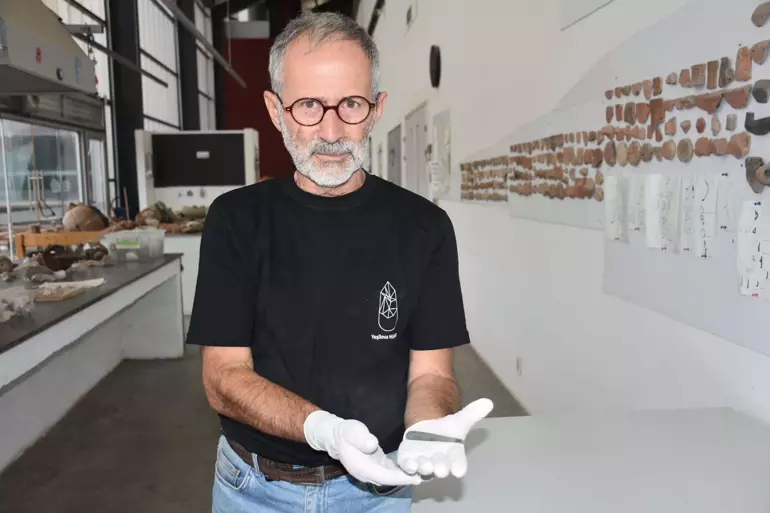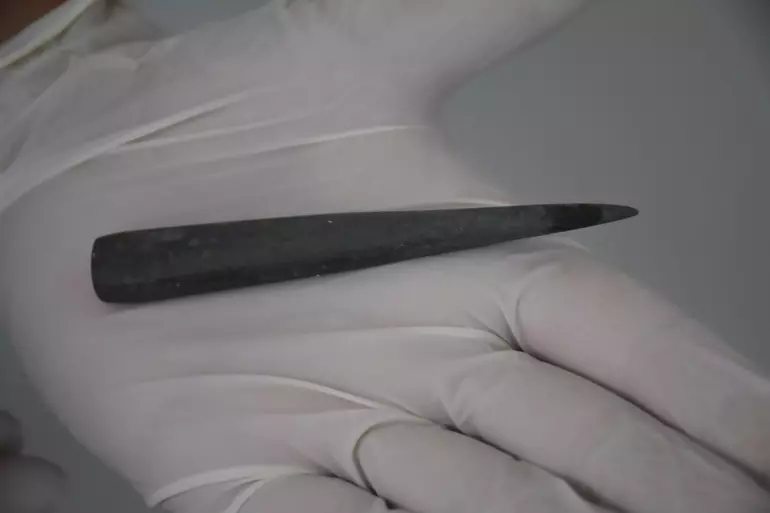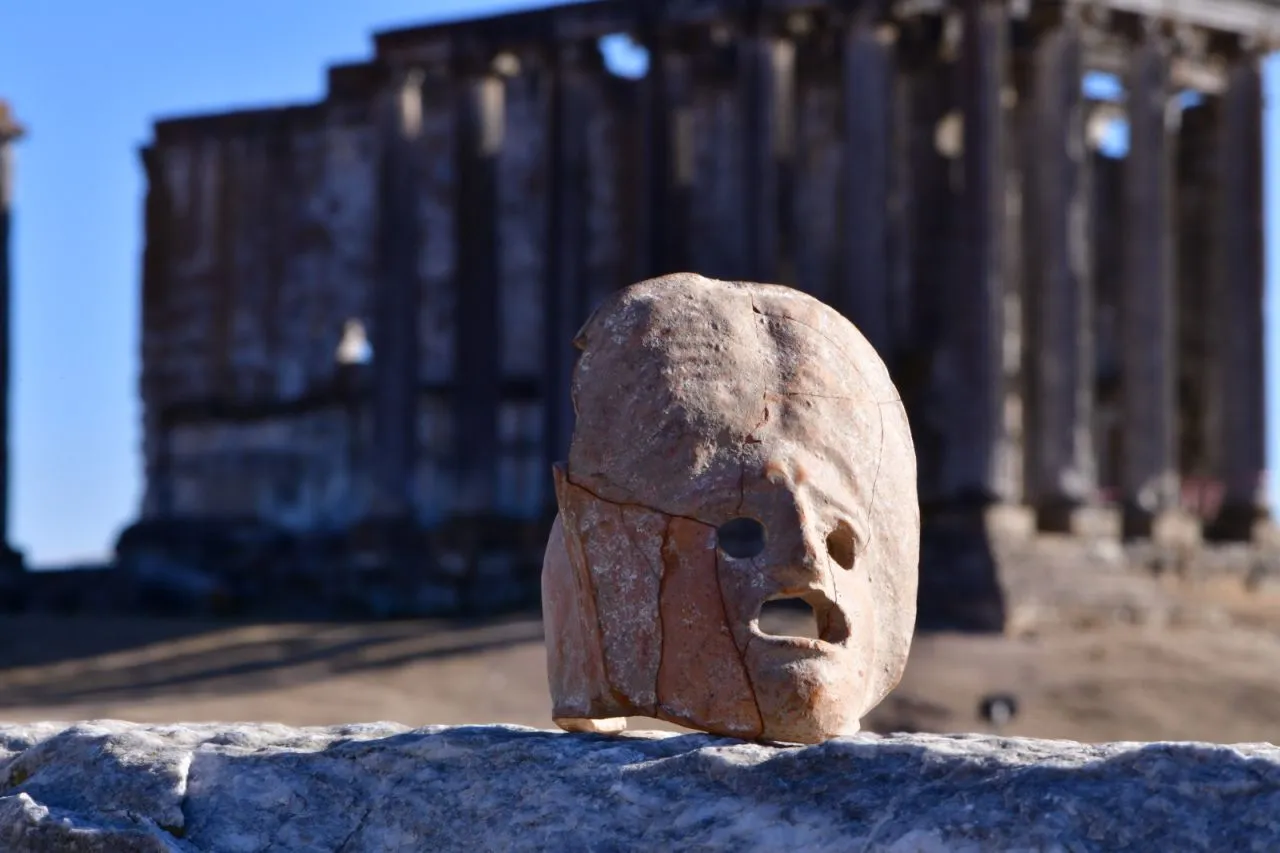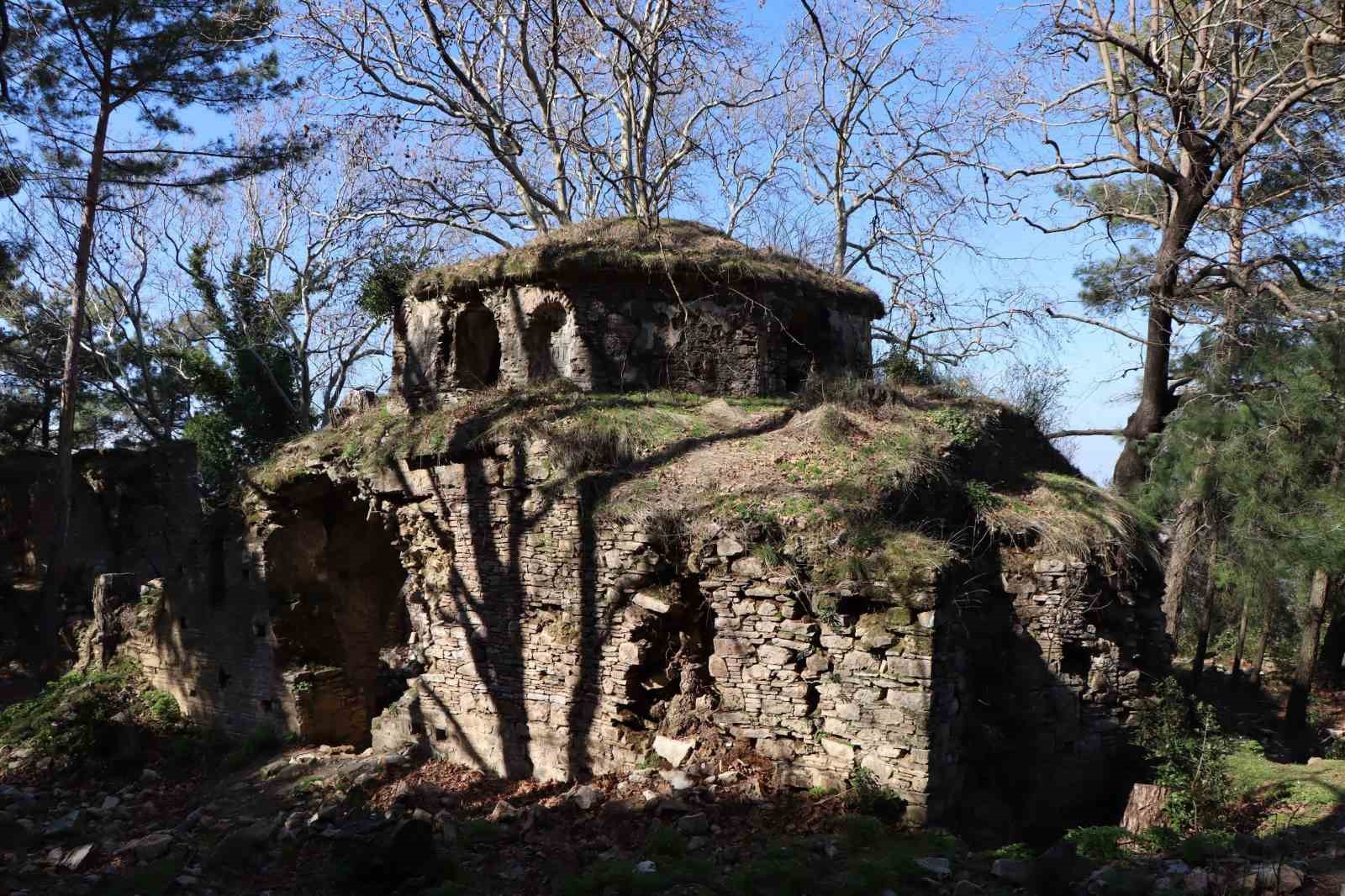Excavations at the Yesilova Mound in western Türkiye have unearthed 8,200-year-old kohl made of stone material was found.
Yeşilova Mound is located in Bornova district of Izmir. Yeşilova, which has a history of approximately 8500 years, is the oldest settlement in Izmir, dating back to the Neolithic Age.

Excavation Head Assoc. Prof. Dr. Zafer Derin said, “There is a black paint residue at the tip of the find. These are called kohl. It is an ornamental tool. This shows that Aegean women 8,200 years ago also cared about their ornaments, were fond of their beauty and took care of themselves.”
Excavations have unearthed 9 villages so far. During the last excavation season, many remains from thousands of years ago such as sea bream, poisonous stingrays, sea urchins, clams and mussels were found. The findings provide information about the dietary habits of the first Izmirites.

During this year’s excavations, an 8,200 year old kohl was found. Made of stone and 9.5 centimeters in length, it is said to be the oldest dated kohl found.
Zafer Derin said, “We found a 9.5 centimeter long stone pencil with a sharpened tip dating back 8,200 years in a village in Yeşilova. There is a black paint residue on the tip of the find. We found similar ones 4,000 years ago in Syria, Iran and various parts of Anatolia. These are called kohl. In other words, they are crayons that women use on their eyes for beauty. It is an ornamental tool.”

“The pencil is used by dipping it into a container of paint. Women take the paint with a pencil and apply it to their eyes. This usage is still present in various parts of Anatolia today. This is not the first artifact in the region to show that Aegean women value their beauty. We found a vessel in which they put their ornaments. This shows that Aegean women were fond of their beauty and took care of themselves in the historical process.”
Cover Photo: DHA




